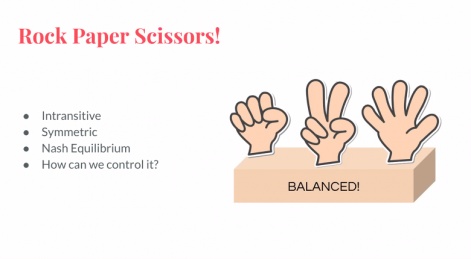Game balancing is a fine art, with many specific components that combine actual development with player psychology.
As part of PGC Digital #4, lead game designer at Zynga, Poornima Seetharaman, took to the stage to run an in-depth workshop about the art of balance in game development.
Seetharaman began with a short introduction to balancing. She discussed the four different components of balancing: instinct, logic/maths, playtesting, and statistical models.
"One thing you have to remember is you're making your game for your player, and not for yourself," she says.
"Understanding your target audience and their skill level is a key part of understanding how to balance."
Poornima then discusses the positive feedback loop, achievement earns you a reward, the reward grants power, and power eases the player into the next achievement.
"People need to be in the flow state in order to return to the game," she says.
She later discusses the adrenaline dopamine effect, and how this plays into the loop. If players are stimulated and enjoying the game, that means it's balanced.
Poornima moves on to discuss power vs. difficulty in games. When you start off, the balance is lower, but as you progress through the game the power and difficulty levels will get harder.
Changing the meta
After a while, the meta in games can become stagnant once players have mastered it - so how do you shake that up? Poornima discusses how to change the meta while keeping the game balanced for players.
She uses the rock, paper, scissors game to demonstrate this - the three components of the game have their own values which players understand. Poornima changes the values of the components, which makes players think about their strategy once more.

This is why modern games, especially multiplayer games such as Dota and Overwatch, are constantly rebalanced to cater to which characters players pick and play the most. In these games, certain characters receive damage nerfs and buffs, and changes to their in-game abilities so that their pick frequency will change.
Challenging vs. punishing
Poornima then discusses the line between challenging the player, and feeling as though the game is unfair based on the gameplay. She discusses how the consistency of rules is a main component of keeping games fair.
"There are a lot of games that are challenging but close to punishing," she says
"If you're used to an enemy with a set of rules and skillset and you change that with no warning, that's unfair to the player.
Don't add complexity for the sake of it. Give the player the illusion that they've learned something."
PGC Digital #4 will run from November 9th to November 13th. To keep up to date with all of our coverage, check out the roundups here. There's still time to sign up - to find out more and book a ticket, head to the website.





















